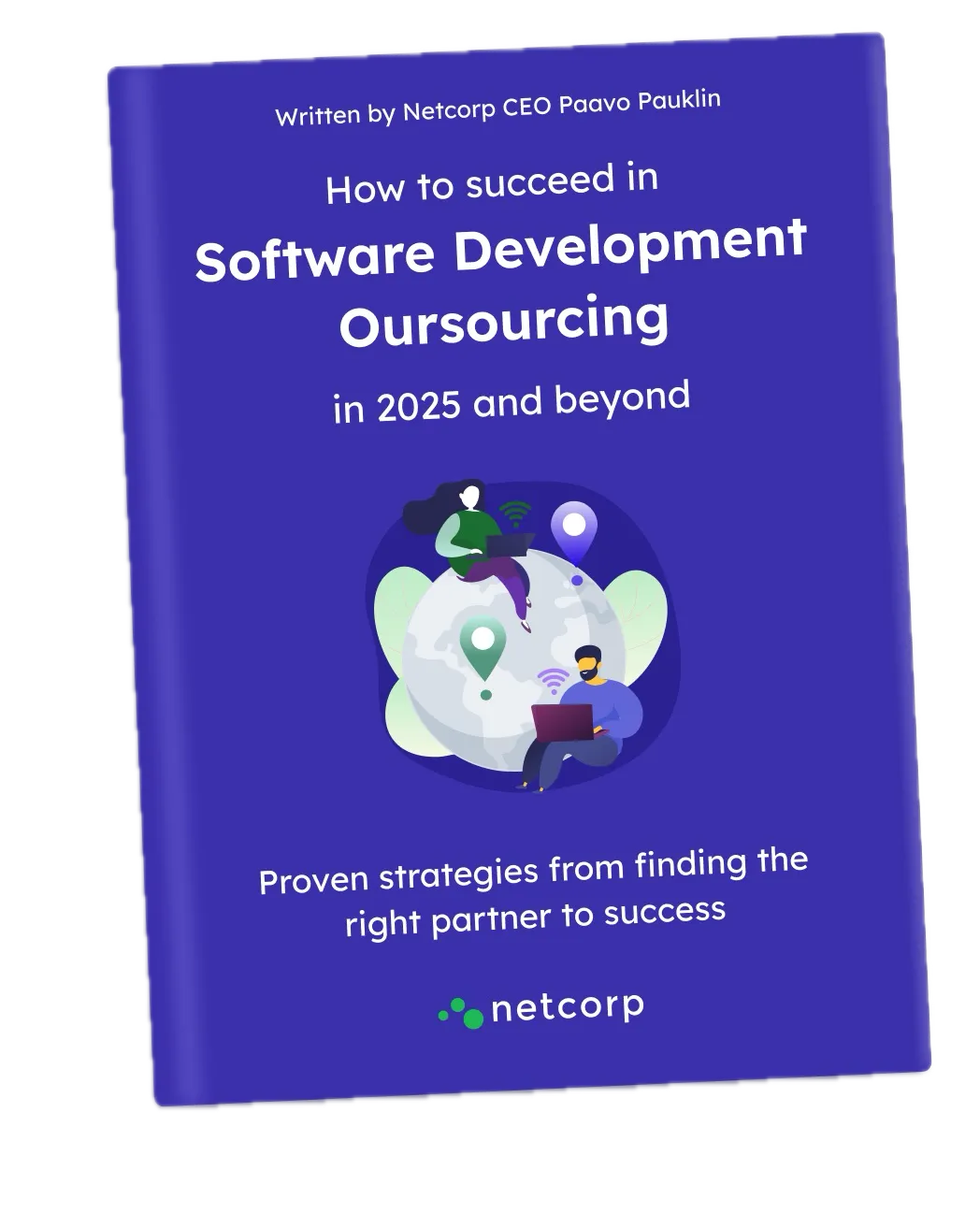
.svg)
Software development outsourcing opens new doors to global talent. Yet, it’s vital to manage these IT teams effectively. Ultimately, management can make or break your product success.
Recently, we took an in-depth look into hiring the ideal software partner. Now that you’ve chosen the right provider for your needs, let’s maximize your IT teams for optimal results.
In this article, we’ll go through first-rate outsourcing management strategies. We’ll detail best practices for communication, team culture, recruitment/retention and more. Kick off your project with our leading tips below!
IT outsourcing is a major business opportunity, but it also has its challenges. The first obstacle is finding top talent for your company. Just consider that the developer gap will reach 85 million by 2030.
Once you capture the right developers, it's essential to integrate them ASAP. This involves creating well-established remote logistics and seamless cultural alignment. Over time, you’ll also want to keep your best pros through benefits such as a positive workplace.
Fortunately, there are key steps you can take to set up your project for success. Clear team management will ensure that your developers align with the project vision. Doing so will also prepare them to seamlessly collaborate.
For example, you’ll want to create a management plan that details these critical areas:
Although every business has their priorities, define these vital areas in advance. (And see more in our ultimate guide below!)
Communication is the foundation of all IT projects. A whopping 57% of software outsourcing products fail due to poor communication. Here are some ways to avoid misunderstandings and excess project changes.
Transparency is the name of the game. Leverage clear tools and workflows, so developers know how to stay connected. (Top recommendations include Slack, Loom, Miro and so on.) Document processes such as milestones, organizational charts, product roadmaps and more. What’s more, define change management practices in your scope to avoid frustrations.
Acknowledge cultural differences and find ways to bring together your teams. Setting clear expectations for deadlines, communication, quality standards, etc. is helpful here. (You might even create a workplace handbook for clarity.) In addition, stay sensitive to diversity and foster collaboration based on shared goals.
Schedule daily/weekly stand-ups and sprints to align your teams. Every developer should have short- and long-term milestones for their work. As part of this process, be sure stakeholders are included regularly in feedback. They should also be notified through progress reports.
Your management strategy should be tailored toward the agile methodology. After all, this work mode can boost project performance by 277%.
Agile involves continuous cycles of development, feedback and iteration. Instead of working towards a fixed vision, agile emphasizes constant improvement. To get top outcomes, it’s important to create close-knit teams that aren’t afraid to pivot. Some ways to establish agile practices include:
IT outsourcing management is most successful when people-focused. Thoughtfully create a positive team culture from day 1. You can create stronger camaraderie and collaboration through:
At the same time, it’s worth focusing on outcomes on your teams. Define what success looks like for every developer, including key metrics. Have regular feedback cycles to reward efforts and improve performance. Overall, this will encourage growth mindsets and keep your culture developer-friendly.
Nearly 90% of leaders said IT recruitment/retainment was a “moderate or major” barrier. As you manage your remote IT teams, keep in mind these strategies for fuller, more engaged teams.
The best developers are in high demand from companies worldwide. You can better appeal to top talent by reimagining what you can offer them. Some expert-backed recommendations include:
Turnover can be extremely costly in IT, resulting in an average spend of $30,000 per role. In addition, turnover disrupts your teams and delays your products. As a result, this can interrupt your long-term business plans.
Today’s market is fierce, with IT hiring ranking as HR’s greatest challenge. You can enhance your company’s odds by incorporating these creative solutions:
Get smooth sailing with your IT team by leveraging our top-notch management strategies. With them, pin down best practices for remote teaming, communication, culture and more.
Keep in mind that the most successful tech teams start with top talent. As you oversee your next software project, get in touch with Netcorp. Management is seamless with our seasoned developers and agile processes. Learn more about how we create strong rapport to meet your most ambitious product goals.
Paavo Pauklin is a renowned consultant and thought leader in software development outsourcing with a decade of experience. Authoring dozens of insightful blog posts and the guidebook "How to Succeed with Software Development Outsourcing," he is a frequent speaker at industry conferences. Paavo hosts two influential video podcasts: “Everybody needs developers” and “Tech explained to managers in 3 minutes.” Through his extensive training sessions with organizations such as the Finnish Association of Software Companies and Estonian IT Companies Association, he's helped numerous businesses strategize, train internal teams, and find dependable outsourcing partners. His expertise offers a reliable compass for anyone navigating the world of software outsourcing.


Download the free copy of our "Software Development Outsourcing" e-book now to learn the best strategies for succeeding in outsourcing!
